The assertion “content is king” has been kicked around the digital world for a while. Some people believe it, others not so much. As the writer and content strategist over here, I am definitely a believer.
Your nonprofit’s content has power. You use content to make your name and your mission known. It’s vital to the telling of your story.
And, just to clarify, “content” doesn’t just mean written copy. It includes everything – photos, videos, infographics, and more.
Since content plays such a large role in how potential supporters grow to know your nonprofit, putting some time and thought into how you approach it is pretty important. This is where content strategy comes into play.
What is Content Strategy?
Your content strategy dictates how you tell your nonprofit’s story. It’s a plan that clearly lays out not only what you’re going to tell people about your nonprofit, but where, how and when. It is a document you can use to inform every content-related decision. Everything from your website to your blog strategy to your social media plan is affected by your content strategy.
A lot of different factors go into building a content strategy for nonprofits. I won’t cover them all today—that would be a very long post. However, I am going to address three key elements of a content strategy that are especially important for nonprofits: messaging, organizational priorities and target audience.
Now, I could give you a rundown of each, but I’m a big fan of letting examples do most of the talking. So, here are three nonprofits with excellent content strategies that clearly show an attention to these three elements.
Messaging
Growing up, whenever I got into trouble, it was usually because of something I said. And, 9 times out of 10, my mom would explain to me, it wasn’t what I said, but how I said. Messaging works the same way. It’s how you approach the point you’re making, your voice and your tone.
Paull Young, the former director of digital at charity: water, wrote this incredibly insightful post where he identified “opportunity, not guilt” as a crucial element of the nonprofit’s content strategy. And, every piece of content they produce, from their website to the videos they post, conveys it.
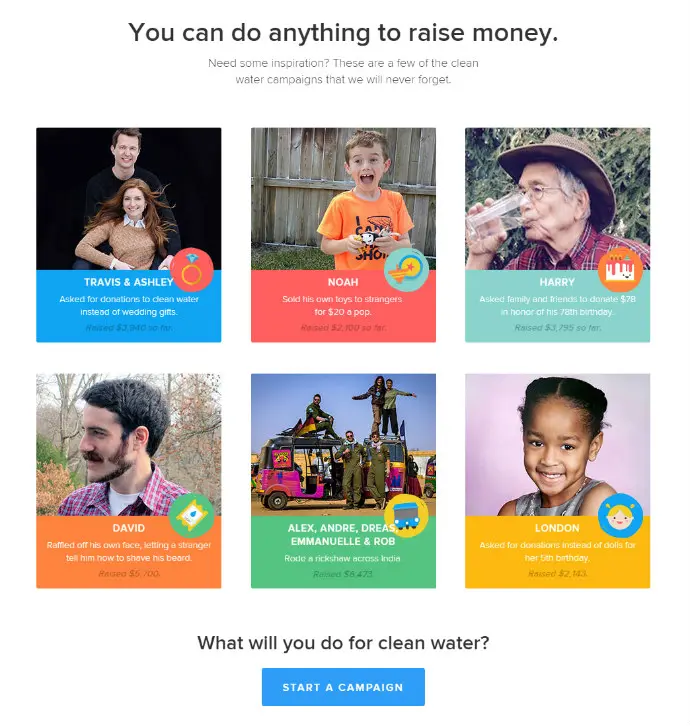
The call out, “You can do anything to raise money” speaks to this idea of opportunity. They’re telling supporters they have the ability not the responsibility to create a campaign for clean water.
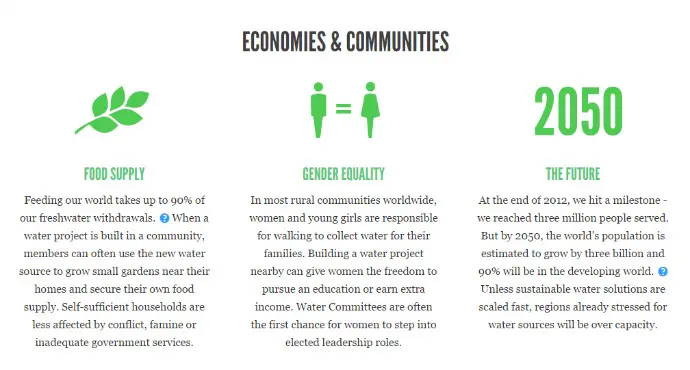
I also love how charity: water frames the information on their “Why Water?” page. By focusing on the impact of a completed water project rather than the desperate need for clean water, they’re reinforcing their message of “opportunity, not guilt”.
Organizational Priorities
Your internal priorities and goals play a large role in your content strategy. They often dictate the organization, prominence and prioritization of certain pieces or types of content. Goals can include things like boosting volunteerism, establishing yourself as an authority on your cause, and increasing donations. They’re completely unique to your nonprofit and your current situation.
Now, I don’t have an inside contact at St. Jude Children’s Research Hospital. I’m not in the loop on their organizational priorities. As a research hospital though, I think it’s fair to assume that generating donations and funding for their research is high on that list. Their content does a great job of supporting this goal.
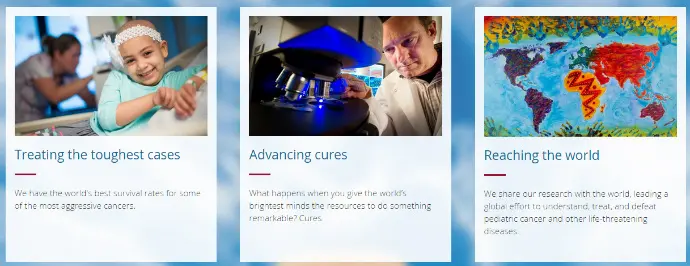
When you’re looking to drive people to donate, you generally want to accomplish a couple of things with your content: explain the need and highlight your impact. People want to give to a cause that needs their help, and they want to support an organization successfully meeting that need. St. Jude’s content accomplishes both.
Intended Audience(s)
Generally speaking, your nonprofit has a primary and secondary target audience. Whether or not this is true, and who those audiences are, varies from organization to organization. The point is though, knowing who you’re targeting is crucial to a successful content strategy. This helps determine where and how to share your content.
It’s clear from the content Love is Louder produces that their primary audience is the adolescents they’re helping. Everything about their approach to content is young, trendy and on target with pop culture.
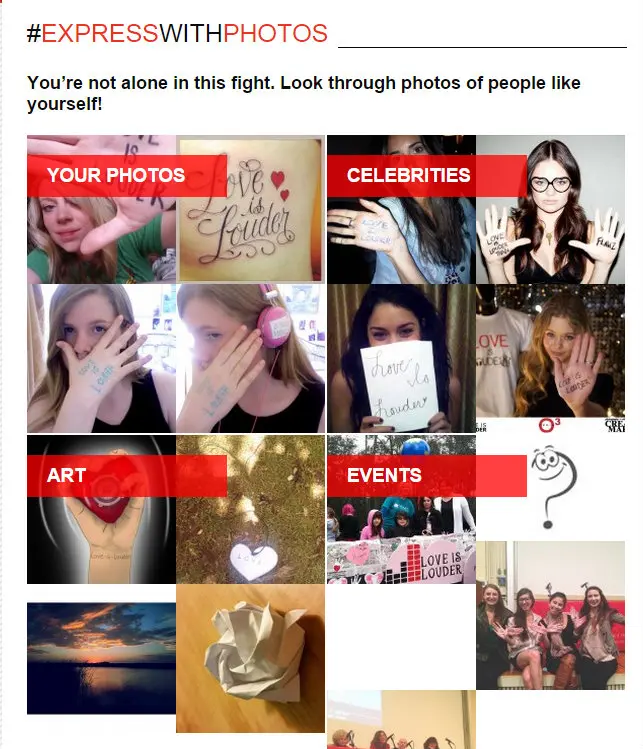
Hashtags in calls to action, selfies and pop culture-focused blog content clearly identifies preteens and teens as their primary audience. The blog is constantly churning out posts tying popular celebrities, movies and brands to their cause.
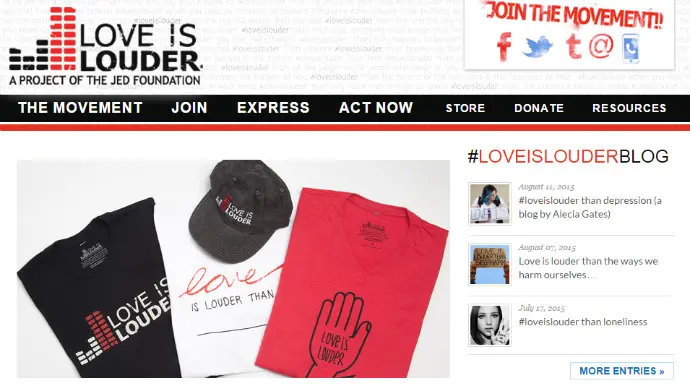
The navigation is another clear indicator of their primary audience. They’ve prioritized joining and supporting the movement through non-financial actions over driving supporters to make donations.
There are a lot of factors to consider when putting together your content strategy. This post is in no way a comprehensive list. But, messaging, organizational priorities, and target audience are definitely three components you need to nail down for your content to be effective.
Does your nonprofit have a documented content strategy? What key factors did you consider when crafting it? Know of any other nonprofits with awesome content strategies? We’d love to hear from you in the comments.

I am new to the nonprofit world, though I have a writing background and agree about the importance of content. But I never really considered the role of visual content so this was very informative. Thank you!
Tracy,
Thanks so much for the comment. It’s definitely easy to forget how important visual content can be when you’re putting together your content strategy. I’m glad the post helped!
I am a content strategist working for a large nonprofit with many different sub-sections. What advice do you have about designing a homepage for an organization that actually contains lots of sub-parts, like a university with competing departments?
Hi, Ross. Thanks for commenting! It’s hard to give specific advice about homepage content without knowing the ins and outs of your organization. However, for an organization with lots of sub-sections and competing programs, I might put more of a focus on the organization as a whole and the community surrounding it, rather than focus on specific programs. However, you’ll want to ensure that those looking for information on each section can easily find it within your website structure. Try organizing content logically and not by audience or most important content to make sure it’s easily accessible to all of your site’s visitors. Best of luck!